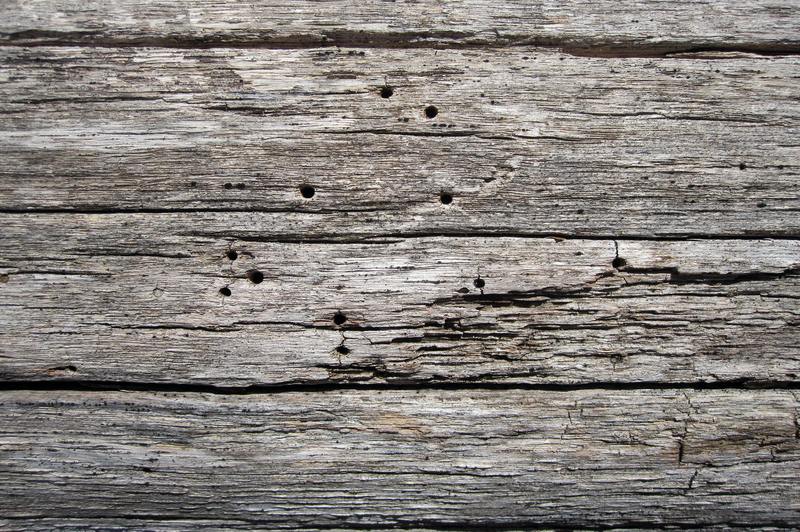Natural wood has porous features that make it a willing victim of water damage. Still, there are ways on how to repair water damaged natural wood at homes. You can even use natural ingredients to restore your beautiful wood structures — or save them from being water damaged.
Natural and artificial wood are both prone to damages caused by nicks and scratches, and water damage. Luckily, some major and minor water damages are covered by water damage insurance unless the damage occurs due to negligence.

Whenever you spot an impairment on your wooden furniture, it is best if you can apply immediate repairs before the water deeply sits on the wood’s pores. We provide here a step-by-step guide (plus tips) on repairing or even protecting the lumber from water damage.
Steps To Fix Water Damaged Natural Wood
Before dealing with the actual water damage on your wood structure, try to locate first the impaired areas and then fix the water leak source. It will save you from the trouble of repeatedly repairing water damage.
Step #1. Removing mold or mildew
After locating the water damaged parts, the next step is cleaning those areas. In doing this, prepare a bucket with bleach and a warm water solution. You can also add three parts of a dishwashing detergent.
Remember to wear protective gloves before cleaning. Use a scrub brush to remove any molds or mildew on the water damaged wood.
Thoroughly scrub the parts and repeat them as needed. Then, rinse the soap with water.
Ensure to do the cleaning outside your home or with your windows and door open. Dry them under the sun or use ventilation to air dry the water damaged pieces.
Step #2. Cleaning stains
Wood stains are often the result of putting wet glasses or hot dishes on the top of the furniture. These turn to unsightly taints on your wood.
To clean the water stains residing on the wood, use a wood furniture cleaner. You can also mix it with orange oil.
Rub the mixture to the surface and repeat as necessary until the stains lift. If the orange oil and wood cleaner solution doesn’t work, you can use mayonnaise or salad dressing instead to remove the wood stains.
Holding a soft cloth, wipe the area in a circular motion to eliminate the stain. Ensure also not to leave any excess mayonnaise on the surface.
Step #3. Scraping with sander
This step will require you an electric sander and 220-grit sandpaper. Before hopping into scraping, wear first a protective mask to ensure your safety against wood dust.
Then, open the windows to allow good ventilation and close any air-conditioning channels. Sand the water damaged area while following the wood’s grain path until you remove the stains altogether.
Ensure to even out the surface. Use a paintbrush to remove the wood dust from sanding.
Step #4. Stripping deep stains
Prepare a stripping agent and use a paintbrush to apply it onto the wood surface gently. Stripping allows the removal of hard stains without harming the wood layers.
For safety, wear a protective mask and gloves before applying the chemicals. Let the chemical oxidize as it begins to simmer with the air.
Step #5. Scraping with a putty knife
After stain removals, it’s now time to prepare the surface for finishing. Use a scouring tool such as a putty knife to sand the surface.
You can also use sandpaper with lesser grits to eliminate the excess chemical from stripping. Brush off the remaining wood dust.
Step #6. Gluing loose joints
Once you’ve entirely sanded the joints with wood glue, you can now apply the new wood glue to tighten up any loose joints of the furniture. Use resin wood glue to reattach the hard-to-fix areas like corners of the furniture.
Step #7. Finishing
Now that you have completed the reparations refinishing with paint and varnish is the final step. Apply two topcoats of paint and let it dry before applying two coats of clear waterproof varnish as well. Let the coats dry, and it’s finished!
Can I Apply Natural Elements To Fix Water Damaged Wood?
Surprisingly, yes, you can use natural ingredients to restore water damage on your wood structures. Examples of these wonder solutions are:
- Coconut oil
- Apple cider or balsamic vinegar
- Canola oil mixed with vinegar
- Fresh walnuts
- Olive oil and lemon
Can I Prevent Wood From Being Water Damaged?
Yes, you can save your lumber from its enemy — water.
One way is to apply natural finishing agents to help in preserving the wood. You can also use sealants such as waterproofing varnish, polyurethane, and lacquer.
Lastly, use a combination of stain remover and adhesive. This combo has powerful properties that will add protection to the wood against water damage.
Conclusion
Doing the repairs is an easy job as long as you have the proper ways on how to repair water damaged natural wood. Preserving them should also be your priority to prevent the damage in the first place. Regular checking of areas prone to water damage can also save you from the hassle.
